 
Innovation to Insolvency: 1986-1992
The years 1986-1992 witnessed some major changes to the line after years of stagnation. The hyphen was dropped from the brand name, and all models were identified as Loadmasters, in line with the new corporate identity. Within the original 100 series, Loadmaster fielded a bewildering array of similar-looking models, with somewhat confusing new names.
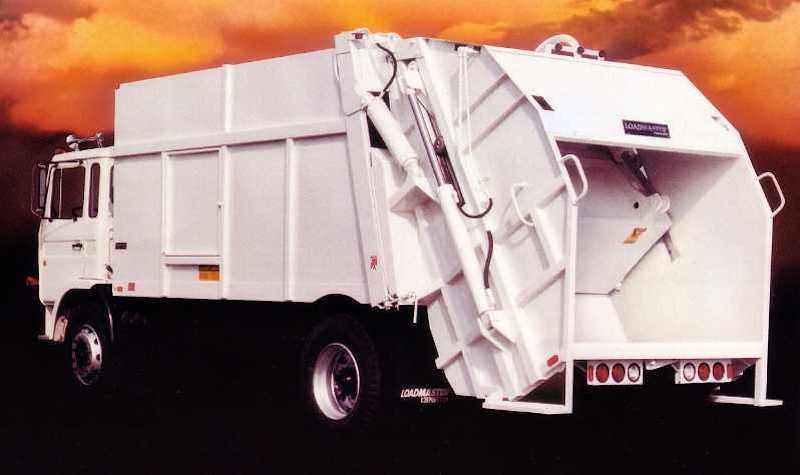
1987 Loadmaster LM-215B "Alley Cat"
After 1985, Loadmaster's entry-level models, now designated LM-200B and LM-300B were redesigned. Lighter bodies, and a more angular tailgate shape with exposed lift cylinders set them apart from their predecessors, following the lead of the previously revamped LM-100 series. Open-front bodies were used or the first time on these models, and the packer main operating valve was relocated to the outside of the tailgate, simplifying the linkage. The 84" wide LM-200B could be ordered with a 13 or 15 cubic yard body. The bigger LM-300B was offered with a 16, 18, or 20 cubic yard box.
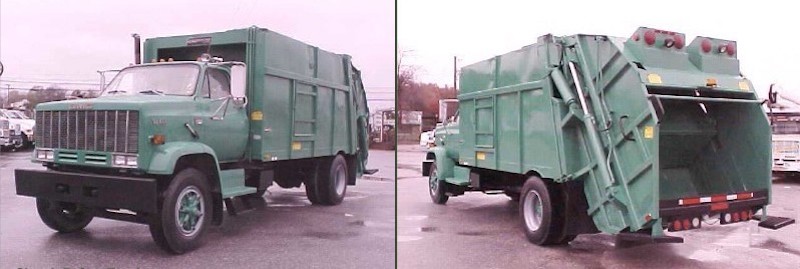
1989 Loadmaster LM-320B
The base model LM-100 series, Loadmaster's original model, was continued with a revamped storage body featuring vertical braces and an open front for easier service. These were probably kept around as low-cost specials to win contract bids. They were fabricated from 50,000 P.S.I. steel and mid-range compaction from the twin 4.25" slide cylinders. Body sizes were expanded, with the return of an 18-yard model joining the 20 and 25-yard versions, plus an all-new LM-131 with 31-cubic yard capacity.
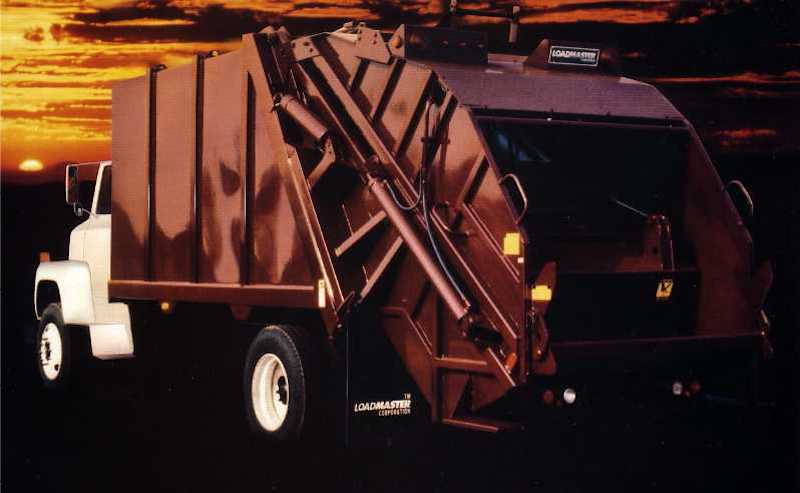
1988 Loadmaster LM-120
LOADMASTER TAG AXLE AND LM-100 MEGA SERIES
Air suspension axles were becoming a hot item during the 1980s as weight enforcement was stepped up in most states. These retractable axles could be lowered when the truck was loaded to re-distribute the gross vehicle weight among three (or more) axles instead of two. When running empty or on the route, the axle could be raised to improve maneuverability and save on tire wear.
Since its inception in the early 1960s, the LM-100 series had featured a tailgate with a long overhang past the rear axle, and a hopper that was slightly narrower than the main storage body. In 1987, Loadmaster took advantage of this feature and fitted an air-suspension rear axle behind the vehicle drive axle. Appropriately named the Loadmaster Tag Axle, it could be ordered on new LM-100 series packers, or field-retrofitted to any existing 100 series Loadmaster.
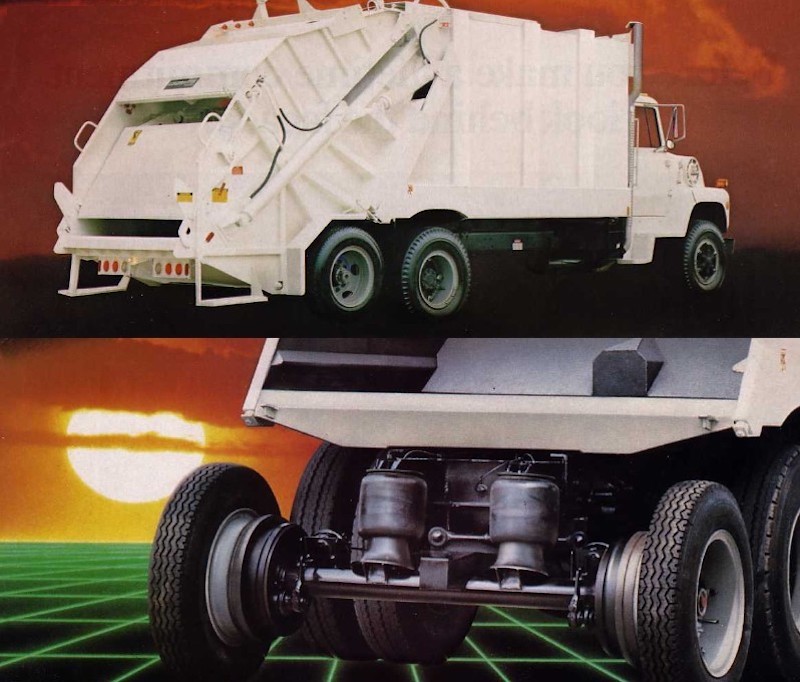
Loadmaster Tag Axle could be fitted to any 100 series, past or present
With virtually every other rear load refuse packer, air suspension axles had to be installed in front of the drive axle(s) because of interference with the tailgate structure. Mounting air suspensions aft of the drive axle required costly narrowing of the tailgate and packer panel. But the Loadmaster Tag Axle fit perfectly below the LM-100's long hopper, with no modification necessary. Instead of just adding an axle, the Tag Axle effectively extended the vehicle wheelbase, thus shifting much more weight to front axle and off of the rear drive axle, where overloads were most likely to occur.
To generate bigger loads for the Tag Axle to carry, the LM-100HC (High Compaction) series was beefed up for 1987 and badged as the LM-100HC Mega. The Mega incorporated many of the features of the LM-400 series, including a heavy-duty body floor, 1/4" thick hopper floor and 100,000 P.S.I high-tensile steel construction. Slide cylinder rams were enlarged to 5.5" bore, as were the sweep cylinders for improved crushing power. Body sizes were the same as the base model LM-100, ranging from 18 to 31-cubic yards.
The larger bore of the packer cylinders allowed for a lowered system operating pressure (1,850 P.S.I.) that reduced harmful heat generation. With a pressure-regulated ejector, now dubbed 'SyncPak', the Loadmaster claimed consistent 1,000 pounds per yard densities with this new version.
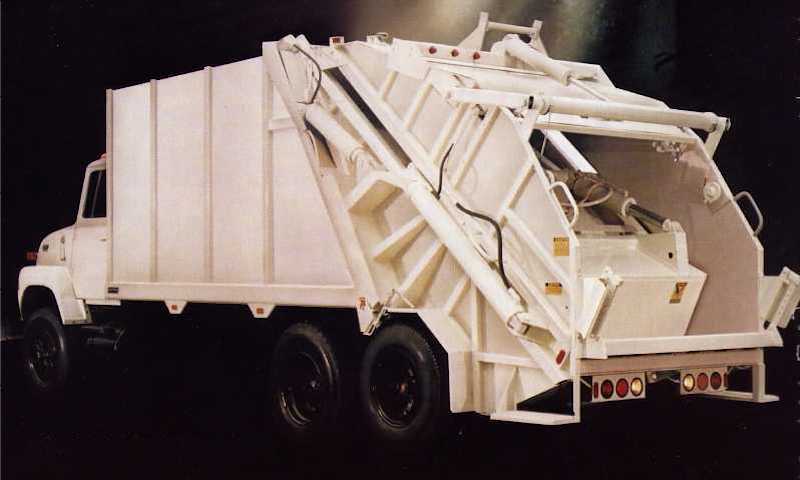
Above and below: LM-120HC MEGAs with Tag Axles and sling-type container lifts
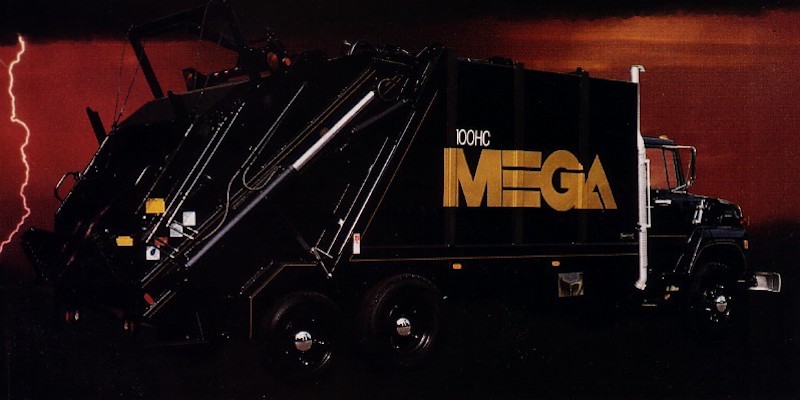



7/4/10
© 2010
All Rights Reserved
Photos from factory brochures/advertisements except as noted
Logos shown are the trademarks of respective manufacturers
|
|